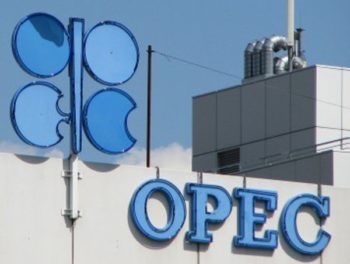The Organisation of Petroleum Exporting Countries (OPEC) has said the demand for its crude would slightly increase to 32.6 million barrels per day (mb/d) this year from 32.5 mb/d as world oil demand growth is projected to drop to 1.15 mb/d from 1.24 mb/d.
OPEC, which disclosed this in its monthly oil report for December, noted that, “This, combined with the joint cooperation with a number of non-OPEC countries in adjusting production by around 0.6 mb/d, will accelerate the reduction of global inventories and bring forward the rebalancing of the oil market to the second half of 2017.”
Nigerian government has proposed a production of 2.2 million barrels of crude per day for the 2017 budget that is based on oil price benchmark of $42.50 per barrel.
The estimated production level ranks Nigeria among the major producing OPEC members. The country is one of the 13 members of OPEC, which is a cartel of oil producing countries founded in 1960.
According to OPEC, the world oil demand estimated at 1.24mb/d, is supported by the transportation sector reflecting low retail prices and better-than-anticipated vehicle sales.
“In the non-OECD, Other Asia and China saw solid-to-steady oil demand growth. In Latin America and the Middle East, oil requirements were lower than initial projections as slower economic developments and a high level of substitution dampened oil consumption. In 2017, world oil demand is projected to grow by 1.15 mb/d. In OECD, oil demand is projected to rise in OECD Americas, flatten in Europe and continue declining in Asia Pacific.
“In non-OECD, improvement in economic activities is assumed to provide support to oil demand growth, particularly in Latin America and the Middle East. Non-OPEC oil supply in 2016 is estimated to contract by 0.78 mb/d.
The main contributors to this decline are the US, China, Mexico, Colombia and other OECD Europe, while growth is anticipated to come from Russia, Brazil, Congo and the UK. Low oil prices led to a decline of 420 tb/d in US oil production.
“Declines are also seen coming from Colombia and China, as well as Canadian conventional crude output. In 2017, non-OPEC oil supply is projected to grow by 0.3 mb/d, despite initial projections in July 2016 for a contraction (Graph 2). This is mainly due to higher price expectations for 2017. The main contributors to non-OPEC supply growth are Brazil with 0.25 mb/d, Kazakhstan with 0.21 mb/d, and Canada with 0.17 mb/d. In contrast, Mexico, US, China, Colombia, and Azerbaijan are expected to show the main declines,” the oil cartel said.
However, OPEC noted that, “this forecast remains subject to a number of uncertainties, including the pace of economic growth, potential new policies and price developments.”
With regards to crude oil price movements, the OPEC monthly report recalled that, November was a volatile month for crude, with the OPEC Reference Basket (ORB) wiping out gains from the previous month to plunge nearly 10 per cent to $43.22/b.
Copyright Ships & Ports Ltd. Permission to use quotations from this article is granted subject to appropriate credit given to www.shipsandports.com.ng as the source.
